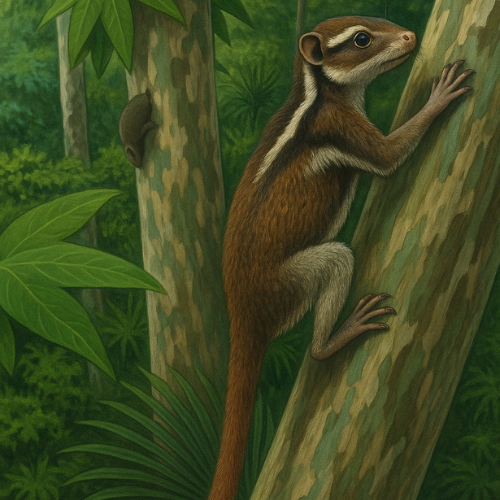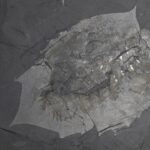A Rare Discovery After 140 Years of Mystery
A remarkably complete fossil of Mixodectes pungens, a tree-dwelling mammal that lived around 62 million years ago, is transforming what scientists understand about mammalian evolution in the aftermath of the dinosaurs’ extinction. Unearthed in New Mexico’s San Juan Basin, this discovery marks the most detailed and complete Mixodectes skeleton ever found, resolving a scientific mystery dating back over 140 years.
For decades, knowledge about this animal was limited to fragments — mainly teeth and jaws. But now, researchers have unearthed a partial skull, a full spinal column, forelimbs, hind limbs, and other skeletal parts, all indicating it belonged to a mature adult individual.
“The skeleton offers one of the clearest views into early mammalian life right after the dinosaurs vanished.”
Life in the Trees: A Climber With a Taste for Leaves
Anatomical features of Mixodectes pungens clearly show it was arboreal, meaning it lived in trees. With limb joints optimized for climbing, including a rotational elbow, mobile shoulder, and a long tail with nearly 20 vertebrae, the animal likely moved similarly to today’s primates.
Key physical traits:
- Weight: Approx. 2.8–3.0 pounds (1.3 kg)
- Limb structure: Enabled gripping and vertical climbing
- Teeth: Specialized molars for slicing leaves, confirming a leaf-heavy omnivorous diet
- Two upper incisors: A rare trait linking it to primates and colugos
Its larger body size for the time also stands out. Compared to smaller species like Torrejonia wilsoni, which favored fruit, Mixodectes occupied a distinct ecological niche, reducing direct competition among species living in the same region.
Evolutionary Connections to Humans
This fossil places Mixodectes within Euarchonta, a group that includes primates, colugos (flying lemurs), and treeshrews. Two different evolutionary analyses found that Mixodectes is either a stem primate or a stem primatomorphan — an ancient branch closely related to modern primates.
“Mixodectes is now recognized as an ancient cousin on the primate family tree, offering crucial insight into our deep evolutionary past.”
This finding is especially important for understanding how placental mammals adapted and radiated into new niches after the Cretaceous-Paleogene extinction event, roughly 66 million years ago. The presence of both primitive traits and advanced climbing adaptations suggests that Mixodectes played a key role in the experimental evolutionary phase that eventually gave rise to primates — and ultimately humans.
Why This Fossil Changes Everything
The discovery confirms that early mammals did more than just survive the dinosaur extinction — they thrived and diversified, taking to the trees and developing traits that would later define entire groups of species.
Notably:
- This is the first Mixodectes skeleton to offer such a full anatomical profile.
- It gives scientists a new lens to study the ecological diversity and adaptive strategies of Paleocene mammals.
- It also challenges earlier assumptions about when and how arboreal life began in mammals.
“This fossil shows that the roots of primate evolution reach deeper into the past than previously believed.”
Looking Forward
The skeleton of Mixodectes pungens is more than just a fossil — it’s a time capsule, offering a window into the moment mammals began filling the ecological void left by dinosaurs. With its strong links to both primates and colugos, this discovery draws a straighter line from leaf-loving tree climbers of the Paleocene to the evolution of primates — and eventually to us.
As scientists continue to analyze this and other related fossils, our understanding of how mammals evolved — and how humans came to be — grows ever sharper.












